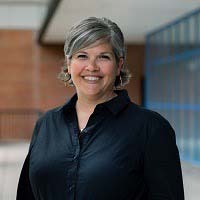Find schools
When you click on a sponsoring school or program advertised on our site, or fill out a form to request information from a sponsoring school, we may earn a commission. View our advertising disclosure for more details.
When you click on a sponsoring school or program advertised on our site, or fill out a form to request information from a sponsoring school, we may earn a commission. View our advertising disclosure for more details.

Dr. Kelly Pennell is a Gill Professor in the Department of Civil Engineering at the University of Kentucky, where she teaches graduate and undergraduate students and conducts environmental research. She earned her BS in civil engineering from Lawrence Technological University, her MS in environmental engineering from Rose-Hulman Institute of Technology, and her PhD in civil engineering (with an environmental emphasis) from Purdue University.
Dr. Pennell’s research interests include the fate and transport of environmental contaminants, water disinfection processes, and environmental systems modeling. In addition to research and teaching, she has experience as an environmental consultant and a governmental liaison.
Dr. Pennell is the Director of the University of Kentucky Superfund Research Center (UKSRC), which is focused on reducing the health risks posed by environmental contaminants in vulnerable communities.
“Waste products (e.g., pollution) are generated as part of our daily lives, and therefore environmental engineering intersects nearly every part of society,” Dr. Pennell says. “The field of environmental engineering is broad, and includes topics related to agriculture, mining, manufacturing, and civil infrastructure systems.”
Environmental engineers are on the front lines of pollution prevention, working on projects related to drinking water, wastewater, stormwater, solid waste, air, energy, site assessment and remediation, and health and safety. Regardless of their area of focus, they harness their talents in areas like biology, chemistry, and statistics to iterate solutions that reduce pollution.
“The most critically important challenge for environmental engineers is to understand what, where, how, and why pollution is occurring, so that it can be prevented,” Dr. Pennell says. “Solutions are only possible when the problem has been accurately and comprehensively defined. Environmental engineers must invest time and resources to develop accurate conceptual models of the problem before they begin to propose solutions.”
At the University of Kentucky Superfund Research Center (UKSRC), the cross-disciplinary research and training environment is focused on addressing critical human health challenges associated with halogenated organic substance exposures. Of the four research projects currently underway at UKSRC, two are classified as environmental science engineering projects.
But their work goes beyond that of the physical and biological sciences and extends to involve community stakeholders in promoting health and wellbeing in local communities, seeking to reduce disparities in both environmental health outcomes and minority representation.
“Environmental engineers must also consider who is impacted by pollution,” Dr. Pennell says. “That may require environmental engineers to consider community members and other societal consequences of pollution that are beyond conventional engineering training.”
The environment is a global concern, and protecting it requires a collaborative approach. Environmental engineers, scientists, and researchers are increasingly working together with not only other disciplines but with the general public, too. Community engagement in environmental topics is growing, and successful case studies have been documented where stakeholders from various groups have meaningfully participated in the decision-making processes around environmental issues.
“The opportunity for communities impacted by negative consequences of pollution to be active in decision-making processes is extremely exciting,” Dr. Pennell says.
Dr. Pennell acknowledges that the challenges associated with our global environment can feel overwhelming, but believes that the words of Dorothy Day, a journalist and social activist, can inspire new and aspiring environmental engineers to use their talents to make contributions towards environmental issues:
“People say, what is the sense of our small effort? They cannot see that we must lay one brick at a time, take one step at a time. A pebble cast into a pond causes ripples that spread in all directions. Each one of our thoughts, words, and deeds is like that. No one has a right to sit down and feel hopeless. There is too much work to do.”
Preventing pollution and caring for the environment takes the work of everyone. To learn more about ways both engineers and non-engineers are tackling the problem, check out some of the resources below.
By reading a select number of engineering blogs, university students can gain access to the thoughts of some of the best engineers in the world and get on the path to becoming one themselves.
The concepts of civil engineering are particularly well-suited for the game environment, emphasizing the proper distribution of resources, the management of supply chains, and how the built environment interacts with the lived environment.
Among all employment sectors, engineering and technology are stereotypically replete with introverts, people who derive more pleasure, satisfaction, and energy from being alone as opposed to being in groups. While that is the stereotype, some engineers are extroverts, receiving much of their energy and enjoyment from being in the company of others. Fortunately for this group of people, many engineering occupations aren’t as introverted as they’ve been assumed to be.
By participating in a high school engineering program, students can build a solid foundation in STEM, form professional networks, and gain a clearer sense of their academic and career paths.
Engineers might be the only group of people where you can give them a problem—and they can consider it a gift. The engineering mind thrives on hunting for elegant solutions to complex tasks. That doesn’t mean you should give an engineering student a homework assignment for the holidays, but it does mean you can have some fun with the gift you eventually select.